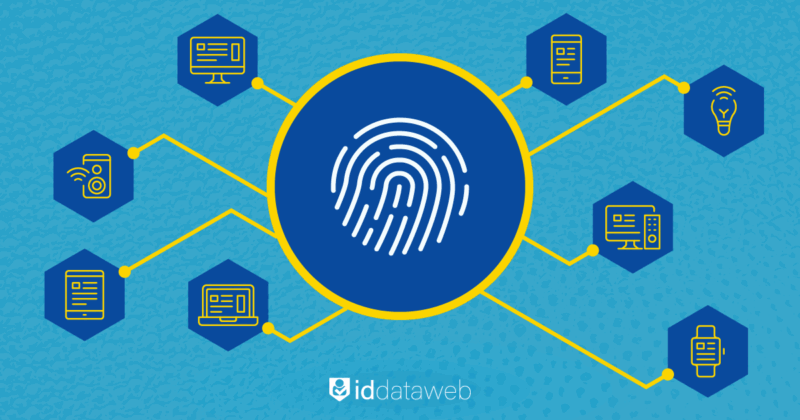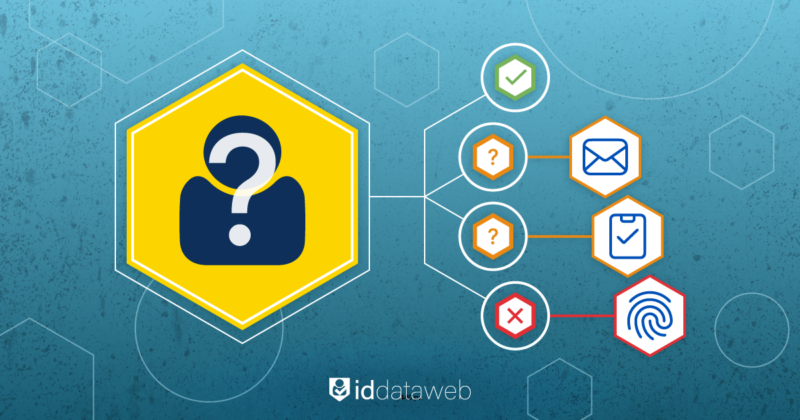Passwords are still everywhere, yet almost every security report calls them the weakest link. Verizon’s 2024 Data Breach Investigations Report shows that stolen credentials remain the top initial action, featuring in 24% of breaches this year and in 31% across the past decade.
The fallout is not limited to risk. Helpdesk logs reveal the operational drag. Forrester pegs a single password-reset ticket at about $70 in labor alone, and analysts estimate 20–50% of all help-desk calls ask for a reset. In short, passwords seem simpler until they aren’t.
Passwordless and phishing-resistant MFA explained
A password is a shared secret: both user and server know it. A thief can know it too. Passwordless authentication replaces that shared secret with a private cryptographic key or biometric stored only on the user’s device. Nothing reusable travels over the wire, so nothing reusable can be phished.
Standards make this real. FIDO2 and WebAuthn bind a key pair to the device. The private key never leaves the phone or security key; the public key sits on the server. When a login prompt appears, the device signs a challenge. Even if an attacker copies the traffic, they learn nothing useful.
Gartner captures the market’s momentum: by 2025 more than half of workforce logins will be passwordless, up from under 10% just a few years ago.
Phishing-resistant MFA goes one step further. Text codes and push approvals can be tricked by look-alike sites or real-time relay attacks. Phishing-resistant factors (passkeys, smart cards, hardware tokens) stop that relay because the domain name, device key, and cryptographic challenge must all match. NIST calls this verifier-impersonation resistance and requires it at Assurance Level 3 in the forthcoming SP 800-63-4 draft.
Obstacles to going password-free
Security and IT teams run into four common hurdles when moving beyond passwords:
| Hurdle | Why it matters | Practical remedy |
| Legacy apps | Some internal tools still demand a password field. | Use an identity orchestration layer that adds passkey support at the front door while maintaining a password behind the scenes. |
| User change fatigue | Employees are familiar with passwords, new protocols can spark confusion. | Provide side-by-side login for a pilot group, pair quick tutorials with clear success cues (a green check, a short vibration). |
| Device readiness | Not every worker owns a modern phone with biometric features or a security key compatibility. | Offer multiple phishing-resistant options (built-in platform passkeys, NFC keys, smartcards) and maintain a loaner pool. |
| Secure enrollment | If attackers sneak in during enrollment, they register their key instead of the employee’s. | Bind enrollment to strong identity verification and device checks (more on that below). |
That last point, secure enrollment, is often overlooked, yet it decides whether passwordless increases or decreases risk.
Turning onboarding into a trust anchor
Picture a help-desk agent on a busy Monday. A caller insists they are Alex from accounting, traveling, phone lost, project due. Should the agent issue a new passkey? Attackers rehearse that story. Without extra proof, the agent might unknowingly hand them the digital badge.
The answer is to tie enrollment to identity proofing and device trust signals:
- Identity proofing: Match the claimed name, phone, and other personal data against authoritative sources, or scan an ID document plus a selfie.
- Device possession: Send a one-time code and check carrier data to confirm the phone is really registered to that person.
- Device hygiene: Look for red flags such as recent SIM-swap, rooted OS, or known fraud history.
- Adaptive policy: Demand more evidence when risk signals spike, and streamline when signals look safe.
Done right, enrollment becomes the strongest link, not a loophole.
How ID Dataweb’s MobileMatch closes the enrollment gap
ID Dataweb built MobileMatch precisely for that trust-at-enrollment moment. MobileMatch works in three short steps:
- Carrier data cross-check. The platform asks the mobile carrier: Is this phone really tied to the person claiming it? Subscriber name, tenure, and SIM-swap history come back in milliseconds.
- One-time passcode. The user enters the code sent to the phone, proving possession.
- Risk signals. MobileMatch flags recent port-outs, abnormal location, or suspicious activity, letting policy decide whether to step up to a selfie or government-ID scan.
Because the entire flow runs on the phone employees already carry, friction stays low. Once MobileMatch clears the user, the platform can immediately register a FIDO2 passkey or another phishing-resistant factor. The verified phone becomes the seed for secure, passwordless login.
Book a custom demo today
Enterprise gains from ditching passwords
Leadership teams often ask, “okay so we could ditch passwords, but what are the returns for our business?”
- Breach risk shrinks. Removing passwords eliminates the attacker’s favorite prize. Even if staff click a convincing link, there is no credential worth stealing.
- Help-desk spending falls. No passwords means no resets, shaving thousands of tickets. For an organization with 15,000 employees, cutting resets can save well over $1 million a year when both labor and downtime are counted, according to Forrester figures and Yubico productivity studies.
- Compliance boxes check themselves. Phishing-resistant MFA aligns with federal zero-trust mandates and upcoming revisions to NIST SP 800-63. Internal auditors no longer flag SMS codes as a risk.
- User experience improves. A fingerprint, a glance, or a single tap beats memorizing and rotating 12-character strings. Shorter login times lift morale and productivity.
- Zero-trust foundations strengthen. Every session now carries device context and a cryptographic attestation, feeding richer signals into continuous access evaluation.
Conclusion
Passwordless authentication sounded futuristic when FIDO first appeared. In 2025 it feels overdue. Threat actors have automated phishing kits, deepfake voices, and one-click MFA-bypass tools. They still crumble when confronted with a private key locked to a verified device.
Enterprises that pair strong identity proofing with passkeys move the attack surface from “guess the secret” to “possess the phone I am holding.”












